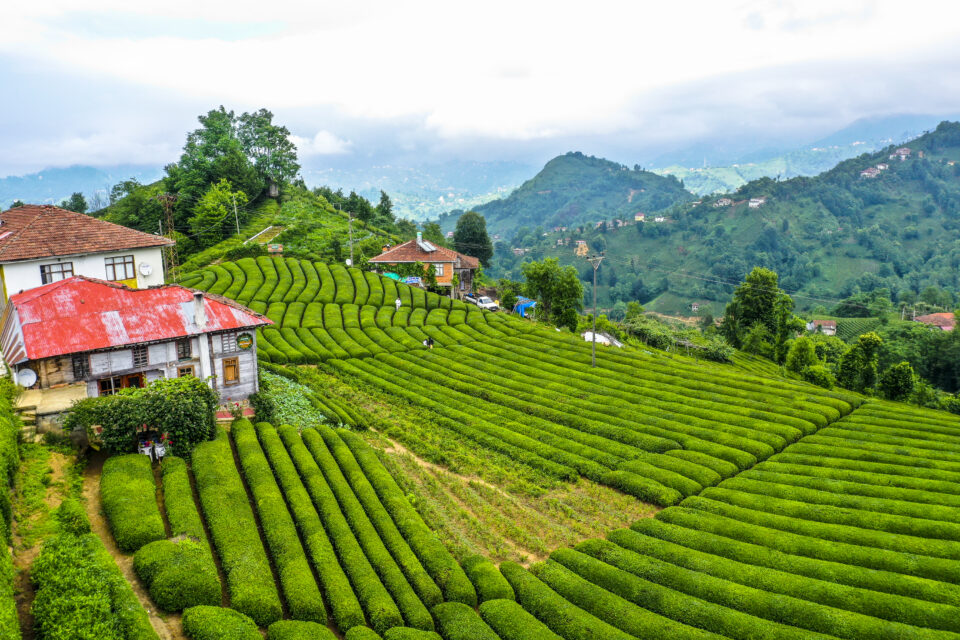Wherever you are in Türkiye, you’ll likely encounter a cup of Turkish tea. Tea is so prevalent in Turkish culture that it is almost impossible to endure a single day without it. From breakfast to dinner, tea is an integral element in Turkish life. But Türkiye is not just a mammoth tea consumer; the country is also a global tea powerhouse, producing 1.5 million tonnes annually. Tea is such an important and deeply rooted cultural component that Turkish tea was included in the UNESCO Representative List of the Intangible Cultural Heritage of Humanity in 2022 through a joint application by Türkiye and Azerbaijan.
Tea in Türkiye is harvested three times yearly: from May to June, July to August, and September to October. It is an essential part of the culture in the Türkiye’s Eastern Black Sea provinces. Today, 70% of Türkiye’s tea is produced in the Rize province, followed by the Eastern Black Sea provinces of Artvin, Trabzon, and Ordu, as well as specific areas in Giresun. Sometimes referred to as “green gold” in the region, Rize tea is also known as “the most natural tea” in the world—it is the only area where snow falls on the growing leaves. The tea is among Türkiye’s geographically indicated products and has a transcendent aroma and flavour that complement its bright red colour.
Visitors travelling to Rize to experience nature on fresh emerald-green Eastern Black Sea plateaus like Pokut, Ayder, and Anzer can also observe or join tea harvests in the province’s plantations. A popular activity is participating in the harvesting, using tea scissors, followed by a photo shoot while wearing traditional clothing. On your way to Rize, you can have a cup of Rize tea with a Rize-style simit, another geographically indicated Rize product. Before leaving the region, you can purchase teas for yourself, friends, and family.
Türkiye takes tea seriously, as demonstrated by the thorough preparation of the beverage. Traditionally, tea is brewed using a pair of stacked teapots made from copper, brass or other metals. Water is boiled in the bottom teapot and then added to the top teapot, along with tea leaves. The bottom teapot is kept filled with boiling water while the tea in the top pot slowly brews.
Brew tea is typically served in small, tulip-shaped glass cups. Strong tea from the top teapot is poured first, with boiling water from the bottom teapot used to dilute the tea to the drinker’s preference. Sugar is usually presented alongside the tea glasses, which, due to their shape and material, retain the warmth of the tea while revealing its colour.
www.goturkiye.com

